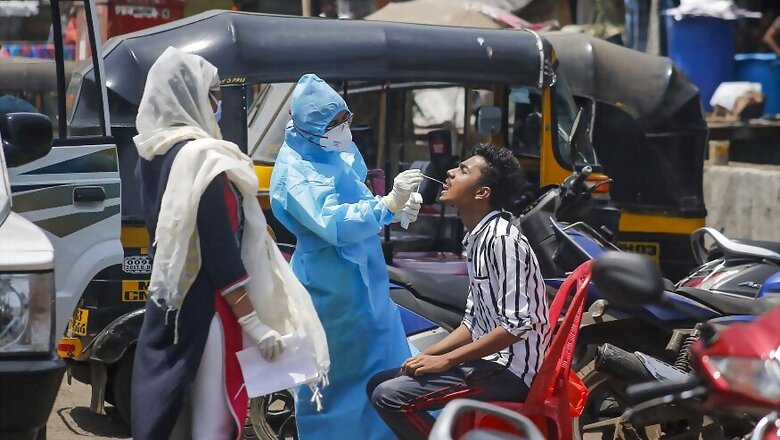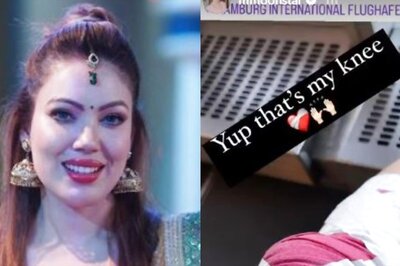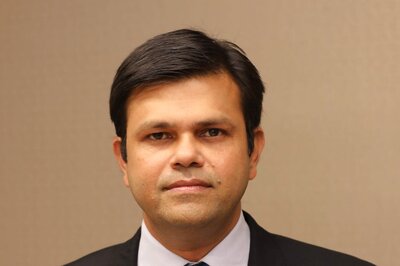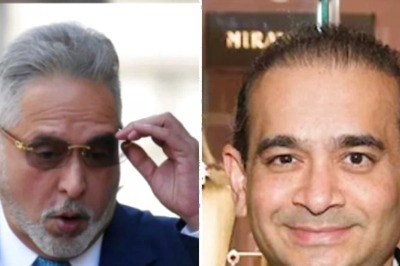
views
New Delhi: Walking around hale and hearty, oblivious that they are a terrible threat to the unsuspecting people around them. These are the asymptomatic COVID-19 carriers. And they exist in large numbers, around the world. According to Dr Raman R Gangakhedkar of the Indian Council of Medical Research (ICMR), 80% of India’s cases were asymptomatic. This would mean that thousands of people in the country who tested positive showed no symptoms but were potential carriers of the disease.
"80% of the cases are asymptomatic. Our biggest worry is on their detection. There is no other way than contact-tracing," Dr Gangakhedkar told a television channel.
This number varies across different states and the range lies between 50% to 82% – 75% of the total reported cases in Punjab, 50% in Karnataka, 65% in Maharashtra, 75% in Uttar Pradesh, 82% in Assam. In Delhi, all 186 positive cases of the virus reported on April 18 were asymptomatic. Most of the positive cases in neighbouring Haryana are also asymptomatic.
Different studies across the world have come up with different ranges for a projection of asymptomatic cases. According to Robert Redfield, the director of the Centers for Disease Control and Prevention in the United States, approximately 25% of people infected with COVID-19 don't present any symptoms or fall ill but can still transmit the illness to others.
However, according to an initial study by the World Health Organization (WHO) in March, 80% of the cases were mild or asymptomatic, 15% severe requiring oxygen and 5% critical in need of a ventilator.
The challenge with a large percentage of asymptomatic cases is the difficulty in tracing and isolating them so that the virus does not spread to the more vulnerable groups. However, there is an advantage too. If contact tracing and quarantine is successfully managed in a country like India with a large percentage of young population and a large number of asymptomatic cases (these are mainly from the 20-40 age group with good immunity), then it leaves a very tiny percentage of severe and critical cases for hospitalisation. This would, in turn, imply a reduced rate of mortality which is exactly what we are witnessing here.
India has a large percentage of its population between 20-44 (around 36%) and only 4.8% above 65. Thus, a high number of asymptomatic cases coupled with a stringent lockdown may actually be to India’s advantage.
To a certain extent, this explains India’s low mortality rate of 3.3% as of April 18 when we had approximately 15,000 cases (compared with when other countries had a similar number of cases). France (4.2%), Spain (4.6%), Brazil (5.1%), Iran (5.7%), UK (5.9%) and Italy (7.2%) all had a higher mortality rate.
15% cases severe and 5% critical
According to Lav Agarwal, joint secretary in the Union Ministry of Health and Family Welfare, 15% of the cases worldwide are severe and may need medical oxygen but just 5% are critical requiring a ventilator. India had around 2% critical cases (58 of 2,902) as on April 4.
The total number of severe plus critical cases in India was around the standard 20% on April 13 (1,671 of 8,356 cases). 80% of the mild or asymptomatic cases are treated at Covid Care Centres, 15% of the severe cases at Covid Health Care Centres while 5% of the critical cases at Covid Hospitals.
Worldometer puts the range of critical cases/active cases for all countries with total cases in excess of 15,000 between 0.01% and 7.85% with two outliers – Brazil (45.65%) and Iran (17.82%).
HCQ, Remdesivir, Plasma Therapy, Kaletra – what will work best in India?
The ICMR has recommended many drugs to fight Covid-19 in India. Among them is remdesivir – a drug used in the outbreak of Ebola. A study published in the New England journal of Medicine stated that when administered, two out of three critical Covid-19 patients who were dependent on oxygen support and ventilators showed signs of improvement.
The use of the anti-malarial drug hydroxychloroquine (HCQ) has also been allowed in an emergency situation for healthcare workers. 18 nurses who tested positive at the Ruby Hall Clinic in Pune were administered HCQ along with homeopathy to build their immunity. They are showing speedy recovery with no respiratory problems.
Another drug Kaletra which is a combination of lopinavir and ritonavir and has been used in HIV treatment is being given to severely critical and old hospitalised patients. A British national in Kerala who had earlier tested positive, was given the treatment and has now recovered. The doctors at the Ernakulam Medical College said the treatment was effective on the patient who was given the drugs for seven days. The result of the test of his samples conducted three days after giving him the drugs returned negative.
Some states are either using or are set to use plasma therapy for moderate to severe cases. It involves using antibodies from the blood of patients who have recovered from Covid-19 to treat severely infected patients. A 49-year-old coronavirus patient at a private hospital in Delhi is reportedly off ventilator support and showing signs of improvement after plasma therapy.
Kerala was the first state to initiate plasma therapy in India. The Sree Chitra Tirunal Institute for Medical Sciences and Technology (SCTIMST) under the department of science and technology, was given a go ahead on April 11 by ICMR. Kerala had started research and protocols for the therapy even before the US Food and Drug Administration (FDA) approved it on April 3.
Another potentially path-breaking development reported from Indore’s Sri Aurobindo Institute of Medical Sciences (SAIMS), is treating Covid-19 patients with tocilizumab (TCZ), an immunosuppressant mainly used to treat rheumatoid arthritis. The treatment was conducted on five critical patients, two of whom made a remarkable recovery. Indore is among the worst-hit Covid-19 hotspots in India with a very high mortality rate. The treatment was administered in cases where the conventional treatment of hydroxychloroquine, steroids, oseltamivir, higher antibiotics and ventilatory support, had failed.
Which drug and treatment works best for India will be known in the next couple of weeks. And that could be the game changer.


















Comments
0 comment